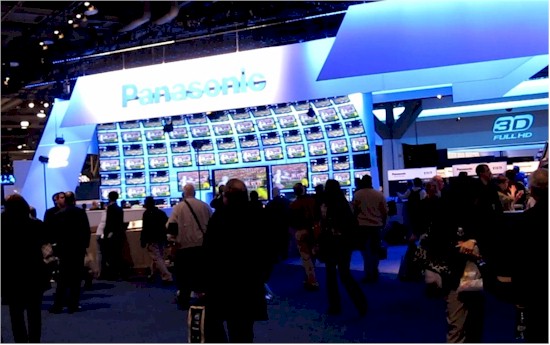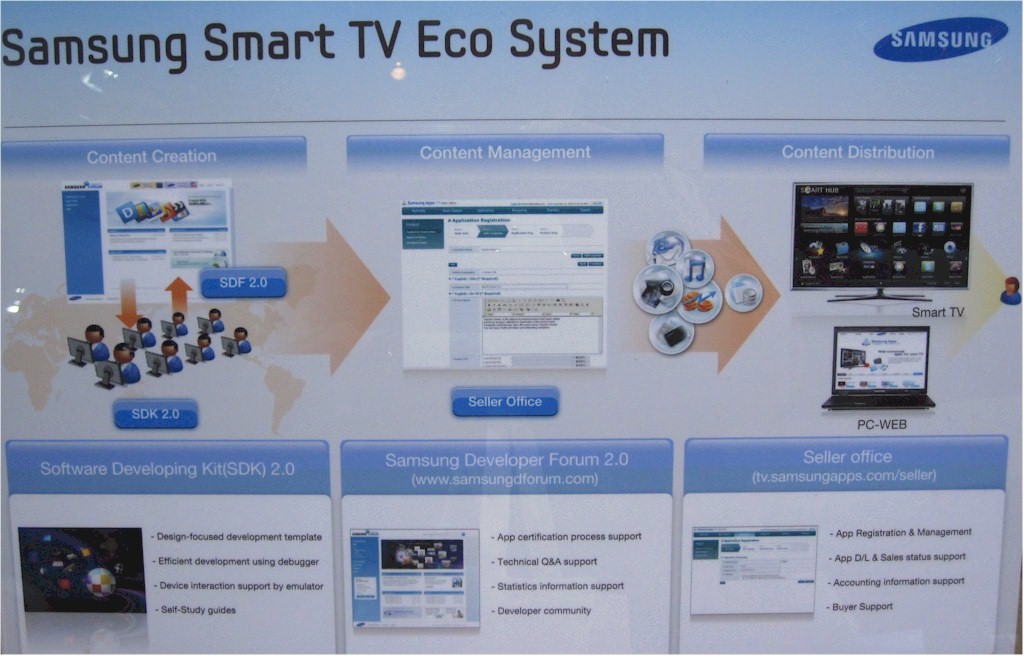Ever wonder where CE companies get their ideas?
CES 2011 continued its tradition of interesting, but not earth-shattering introductions in the world of consumer networking. A lot of the news hits before the show gets underway. Which is a good thing because once I start walking the show floor and meeting with companies, I don’t have much time or energy left to write stories. And I learned long ago that staying up until the wee hours trying to write CES news isn’t worth it in either the quality of the writing or my next-day energy level.
Last year’s CES was mostly about Consumer Electronics (CE) companies trying to convince us that rushing out to buy 3D TVs, Blu-ray players and 3D glasses would make our lives better and brighter. But consumers somehow felt that food, shelter, paying off credit cards and building up savings were a better investment. So by the end of 2010 there were some screaming buys in not only 3D but 2D flatscreens as manufacturers tried to clear inventory.
I got the sense that Panasonic is still firmly in the 3D push camp, with LG not far behind. But Samsung seems to have moved its "Smart TV" message front and center, with Sony taking a similar focus but with Google TV. "Smart TV" has been around for a couple of CESes, but it was much more front-and-center at CES 2011.

Panasonic still pushing 3D
I think CE manufacturers are figuring out that giving people more stuff to do with their recently-purchased flatscreens is a better deal than trying to convince them to buy new 3D ones, or at least the smarter ones have. And for buyers looking for a new flatscreen, models that can access Internet / cloud based content seem more useful than 3D models… and no funny glasses required either.
It finally hit me around three days into the show that the key story wasn’t tablets or 3D / Smart TV’s or even the handful of smartphones that were introduced. It was the app-based technology underlying it all that many of us have embraced so quickly.
We’ve been using software on our desktop and laptop PCs for years, so the concept of software-customizable devices isn’t new. But where buying, installing, configuring and often debugging a software purchase on a PC or even a Mac could drive grown men to tears, installing and using iOS, Android and even BlackBerry apps is a piece of cake.
Apple started the ball rolling with the iPhone and App Store and quickly created a whole new hardware / software ecosystem. But Google’s Android has come from behind to push past Apple’s iOS on both hard and soft fronts and Apple may never catch up.
Apple’s model of controlling everything and being the only hardware vendor works well if you’re content with relatively small market share. It got lucky that Microsoft could never get its act together enough to produce a viable alternative to the iPod (or more likely, saw bigger opportunities in video gaming and maintaining its Windows / Office hegemony). But there is too much at stake for that to happen again with more general purpose devices like smart phones, tablets and now, "smart" TV and set-top boxes.
I poked a bit at the LG and Samsung booths to see if their smart TV platforms were just skinned-over Android. But I was told (by a developer) that Samsung isn’t running Android and I think it’s likely that neither LG nor Panasonic are either for their smart TV platforms. Those CE biggies may be able to attract enough developers to produce enough apps to keep Mom and Pop buyers happy. But there’s no way they’ll be able to match the depth and breadth of Android apps.

TVs with EcoSystems, who knew?
Of course, an Android app for a smartphone probably has more in common with one for a tablet than a smart TV. But the broader (and less tightly controlled) set of opportunities for Android is going to attract a hell of a lot more developers than iOS. And that coupled with the dozens, if not hundreds, of companies that can produce actual Android-based devices instead of just being satisfied with cases, docks and other accessories is producing a power that has the potential to seriously hurt, if not crush Apple’s go-it-alone mentality.
It was only a few years ago that people thought the idea of an OS running their TV set was crazy. But that’s when Windows hiccuped and blue-screened on a regular basis and smartphone OSes were still in their infancy. We still don’t have Windows-based TVs (and hopefully never will). But with Panasonic pitching that its latest Viera flatscreen lineup runs frackin’ video games (and we’re talking more than Pong here) and can be controlled by a companion tablet, it looks like at least one CE manufacturer thinks that software-based TVs are OK to be released into the wild.
Just don’t forget to download anti-virus and anti-malware apps for your smartie TV when you get it.
